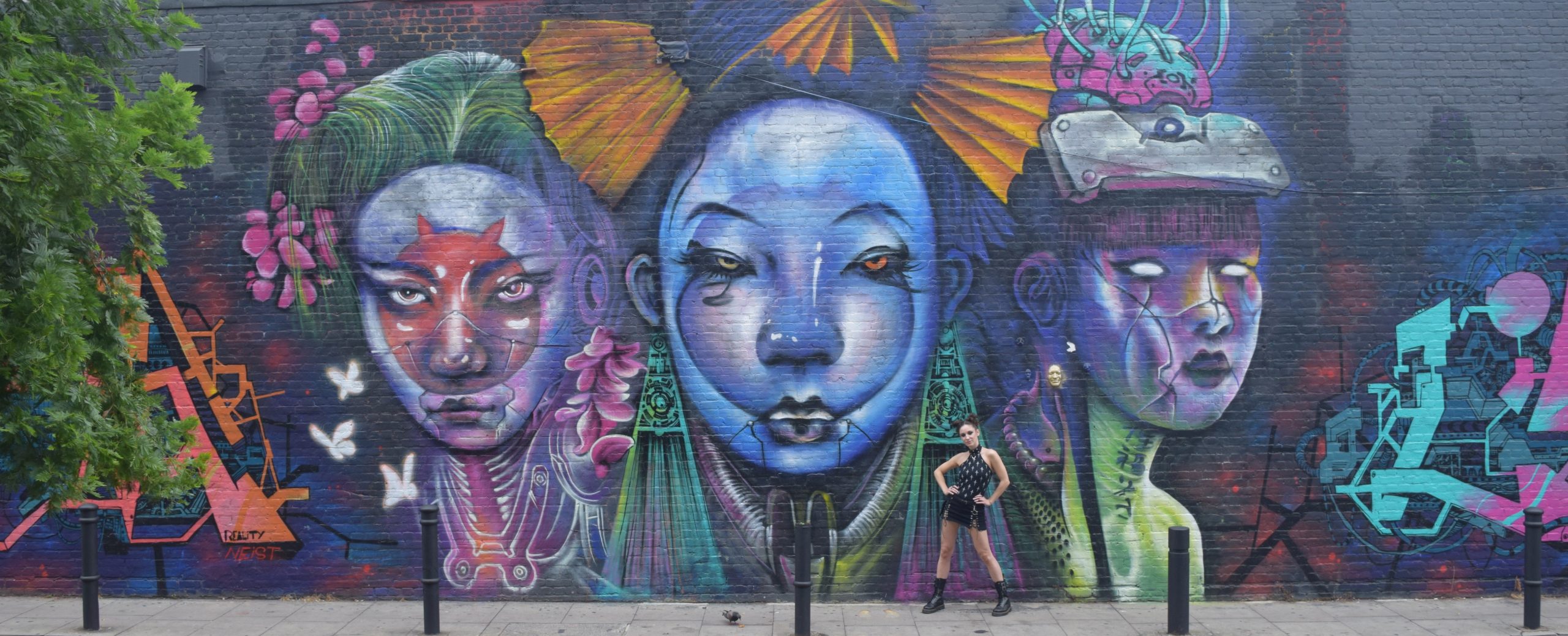
I’m a big fan of street art in its many glorious forms and I appreciate the flashes of creativity, colour, and variety of voices it adds to urban areas. Here I show you my top 10 picks that I’ve spotted on my travels – bring on the pretty photos!
Street art comes in many forms and has its origins in “muralism” and “graffiti”. Muralism can be traced back to prehistoric wall paintings of Altamira (Spain) and pieces documented in ancient Egypt, while examples of graffiti, involving images, slogans, and names, have been scrawled and carved in public spaces for centuries- I even spotted some medieval graffiti in the form of pinwheels to ward off evil spirits carved into the inner walls on St Albans Cathedral on a recent visit.

A medieval pinwheel on the walls of St Albans Cathedral
Growing in sophistication in the 20th Century, “graffiti art” boomed in the 1970s in New York, where young people used spray paints to create bright graphic images (called “wildstyle”) and stylised personal signatures (known as “tags”). Street art as we think of it today is still evolving in its definition, but is sometimes termed “post-graffiti”. While graffiti is often framed as a countercultural expression and can be thought of as an act of vandalism, “street art” can be equally unofficial and unsanctioned, but some pieces are also state-funded or encouraged, and comes in a variety of forms such as stencils, posters, and sculpture.
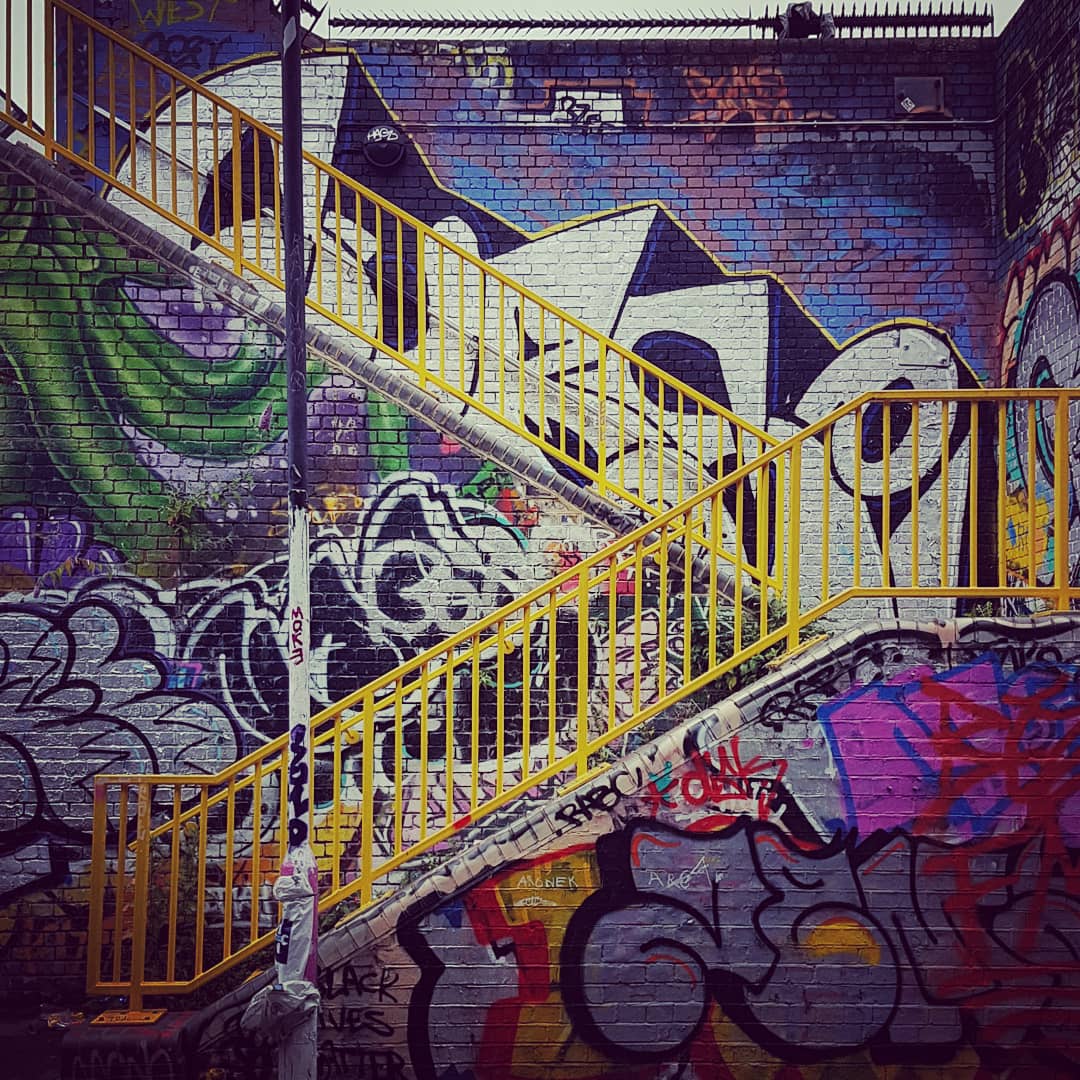
Examples of tags and wildstyle (in Shoreditch, London)
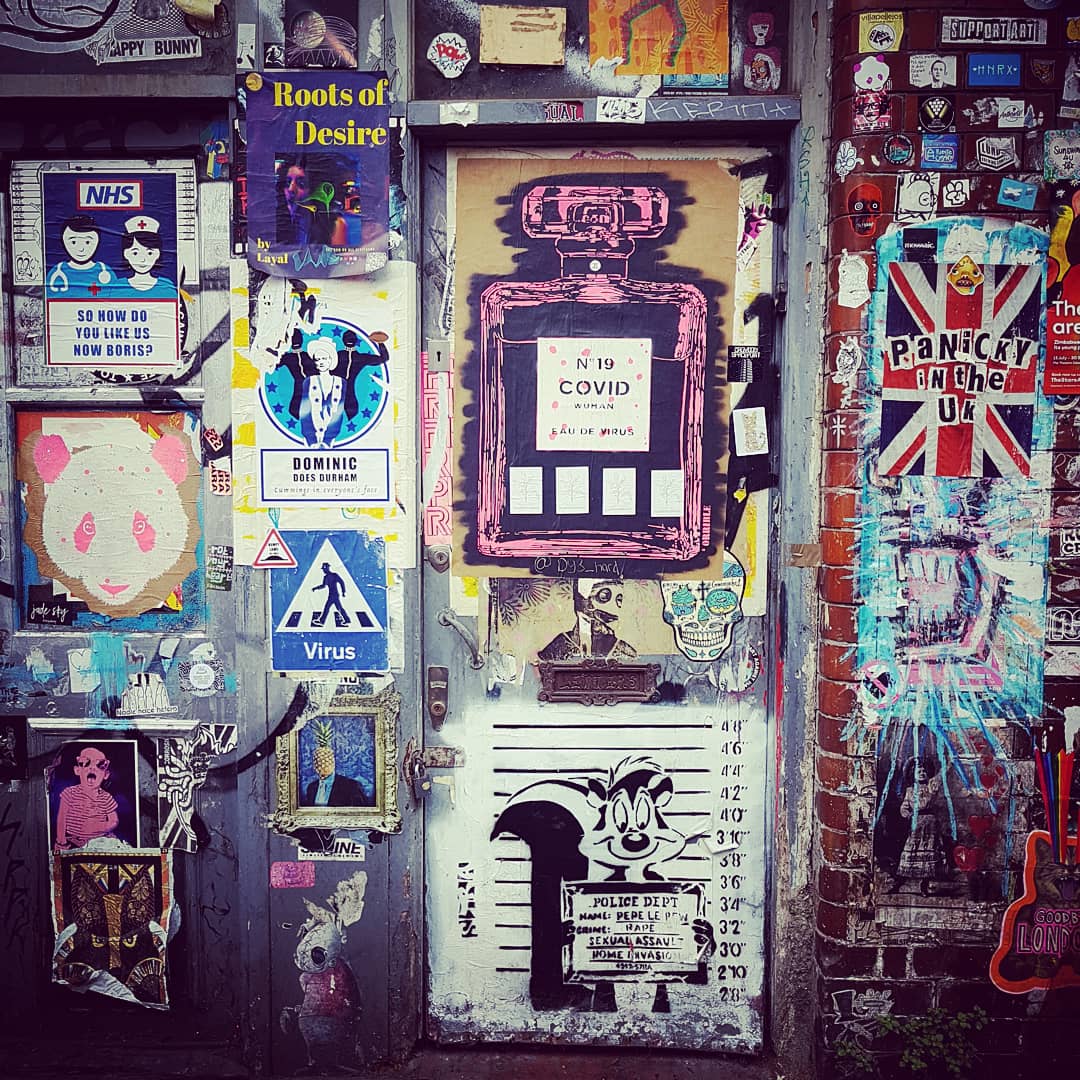
Varying styles of street art vying for space on one wall in Shoreditch, London
The purpose of street art can be a conversation: from the artists to the state to make their underrepresented voices heard, or covert messages between individual artists, battling for limited urban space and painting over or adjusting each other’s work in a game of one-upmanship. Other pieces such as large-scale murals can be sponsored by authorities to beautify or gentrify an area, or if not actively encouraged, then allowed to remain.
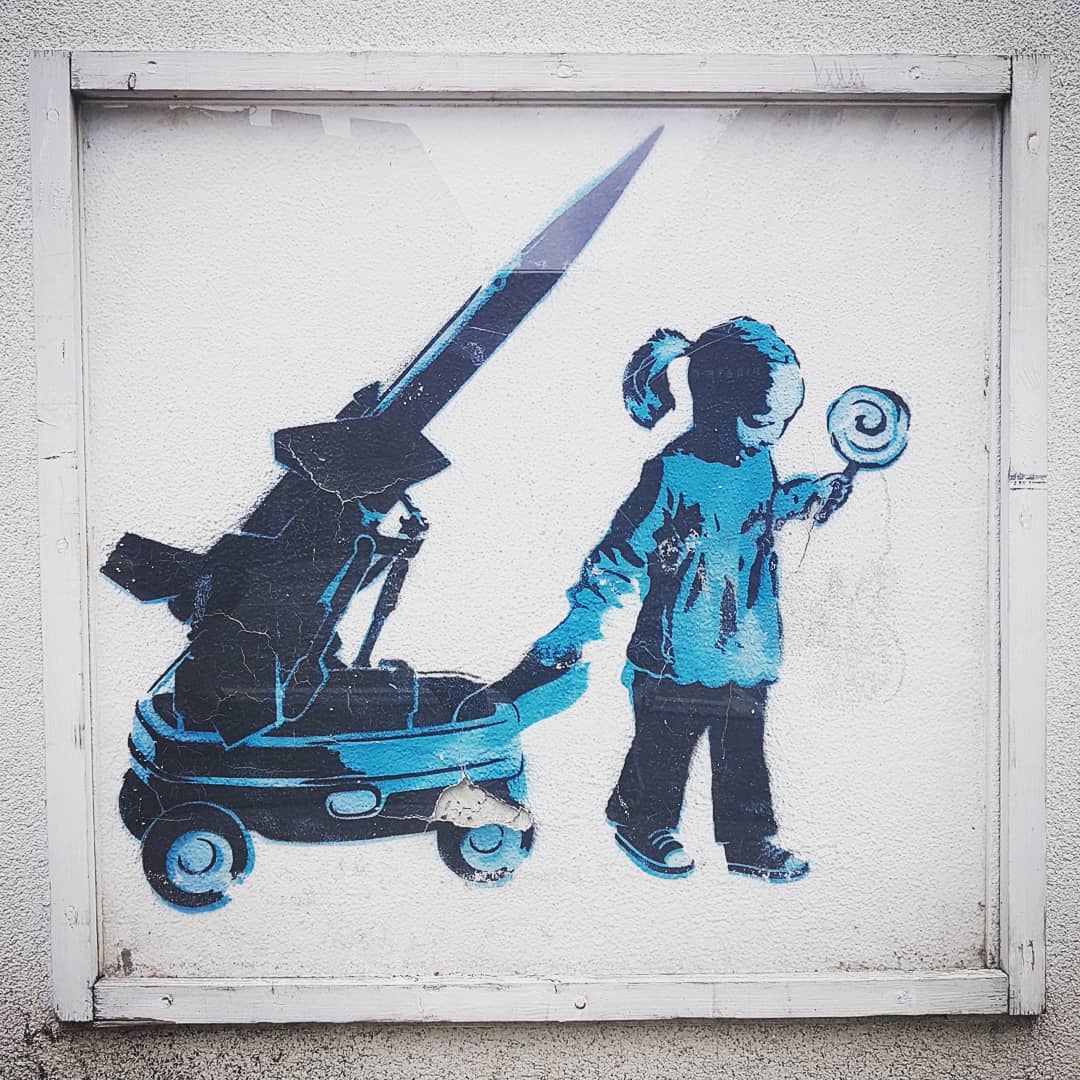
A Banksy behind glass in Camden
Whatever the purpose or form, there’s no doubt that street art has also become big business, with pieces by the famous Banksy for example, are often protected behind glass or even (controversially) removed from the streets to be sold or displayed in galleries. It is also a tourist attraction and many of the finds included below I’ve spotted while on guided street art tours in various cities. I’m also lucky to currently live in London near Shoreditch where we have a great deal of street art, so I just had to write a post about this!
My top 10 picks (so far!):
1. A face over columns by Achilles, Athens
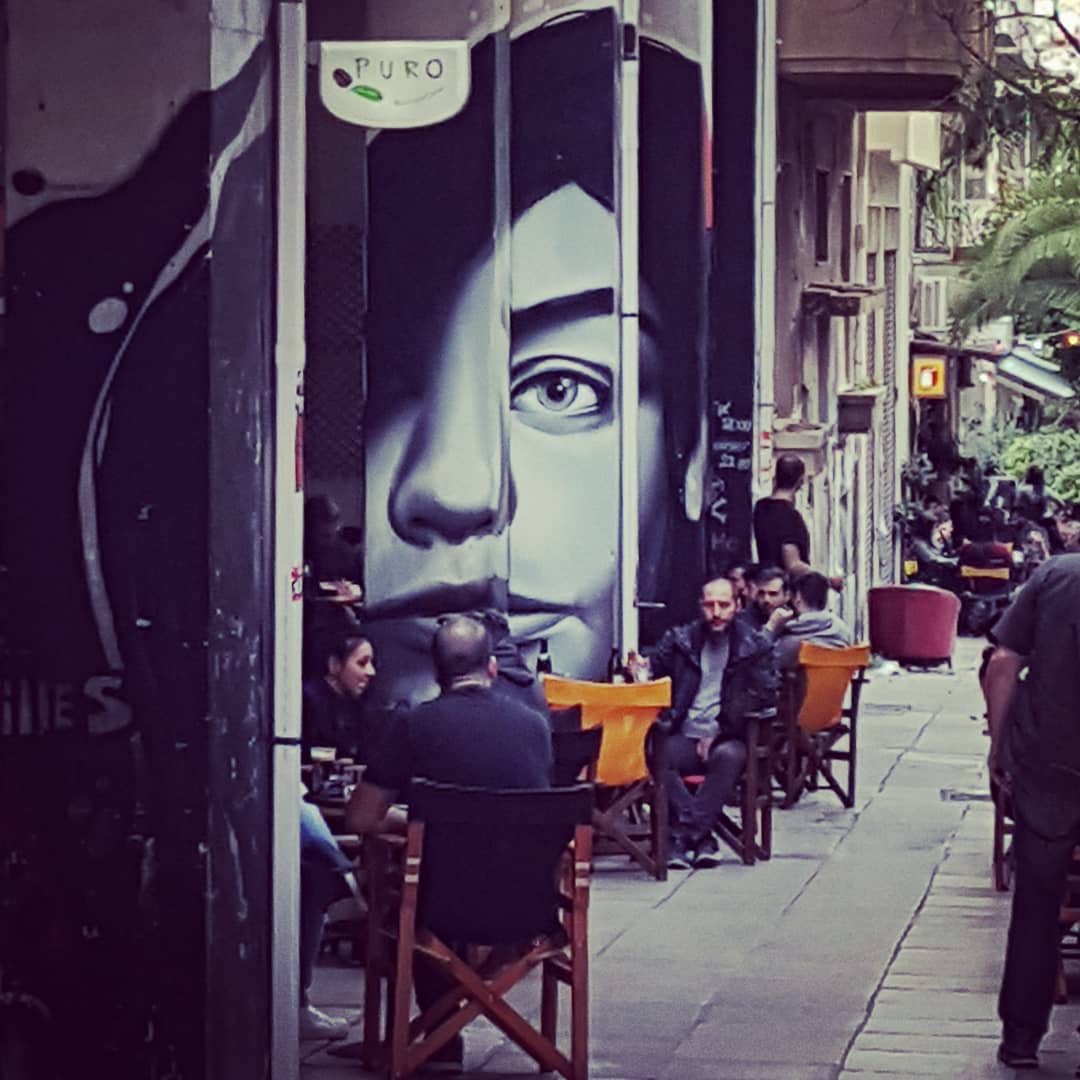
A face over columns by Achilles in Athens
Athens has seen a street art boom, particularly pieces with a political message following the financial crisis, economic downturn, and social unrest in the 2010s. Areas like hip and “studenty”, Exarchia are absolutely covered in graffiti and street art (of varying artistic merit- up to you to decide!).
I stumbled upon this piece while walking down the street and did a double-take. It is a face painted over several columns and only comes into focus as a full piece at a certain point- amazing! The artist, Achilles, is inspired by skulls, eyes, and the act of seeing beyond the surface, that’s why he plays with perspective in many of his pieces. It’s definitely in the “unofficial” category of street art, but I doubt anyone would object to something so beautiful and clever appearing on their building!
2.”MaestraPeace”, Women’s Building in San Francisco

“MaestraPeace”, Women’s Building in San Francisco
This set of murals are very special: this covers the five stories of the fantastic Women’s Building in the Mission district of San Francisco. It was established in 1979 as a support, education, and community space run by and for women. The celebratory murals, collectively called MaestraPeace (“Woman teacher of peace”), were designed in 1994 by seven muiti-cultural female artists: Juana Alicia, Miranda Bergman, Edythe Boone, Susan Kelk Cervantes, Meera Desai, Yvonne Littleton, and Irene Perez.
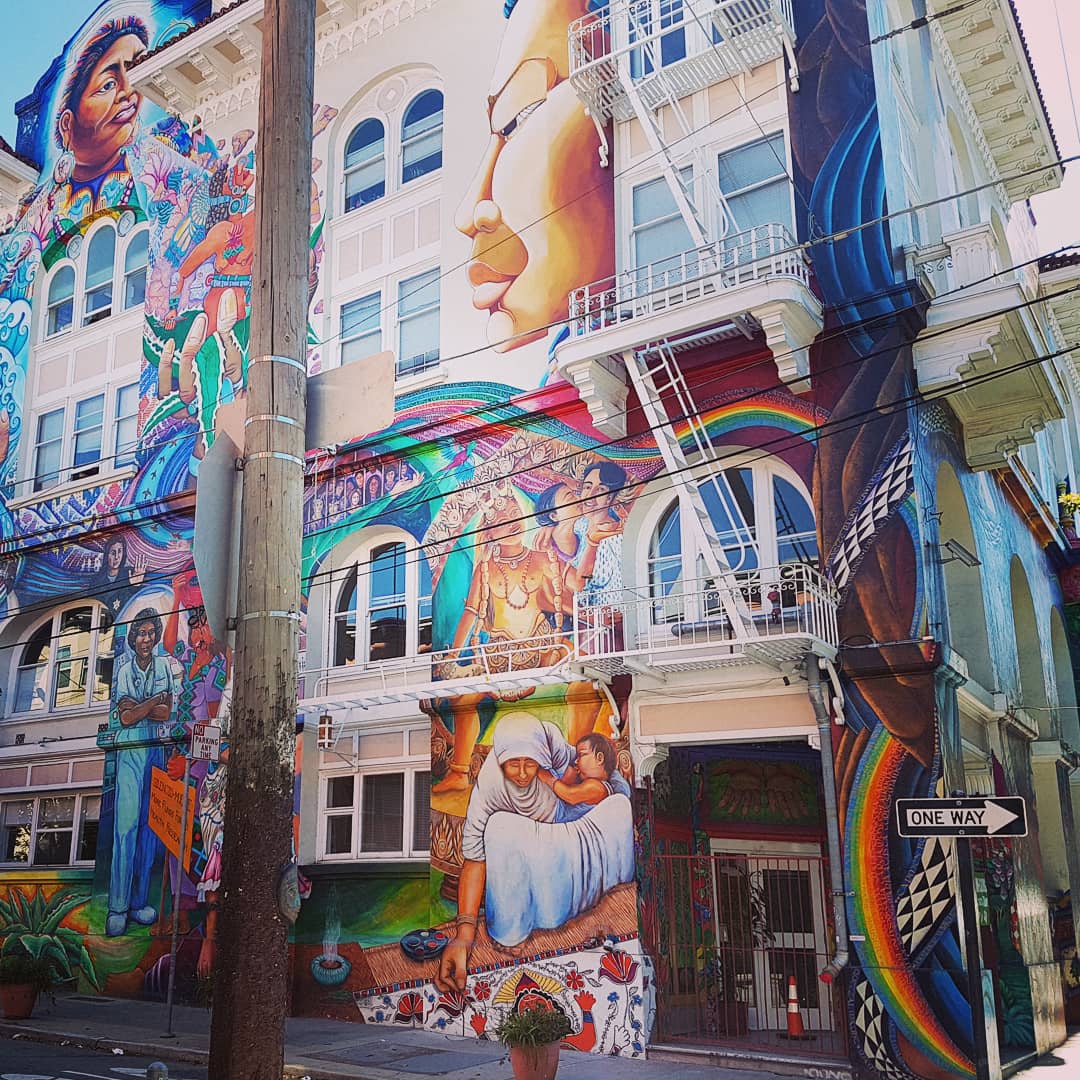
“MaestraPeace”, Women’s Building in San Francisco
The vibrant murals were painted with the help of over 100 volunteers over 1 year, and represent the contribution of women to societies across the world. Their giant size is significant and purposeful to properly represent the scale of this contribution. Beautiful and poignant.
3. “Lightshed” by Liz Magor in Vancouver
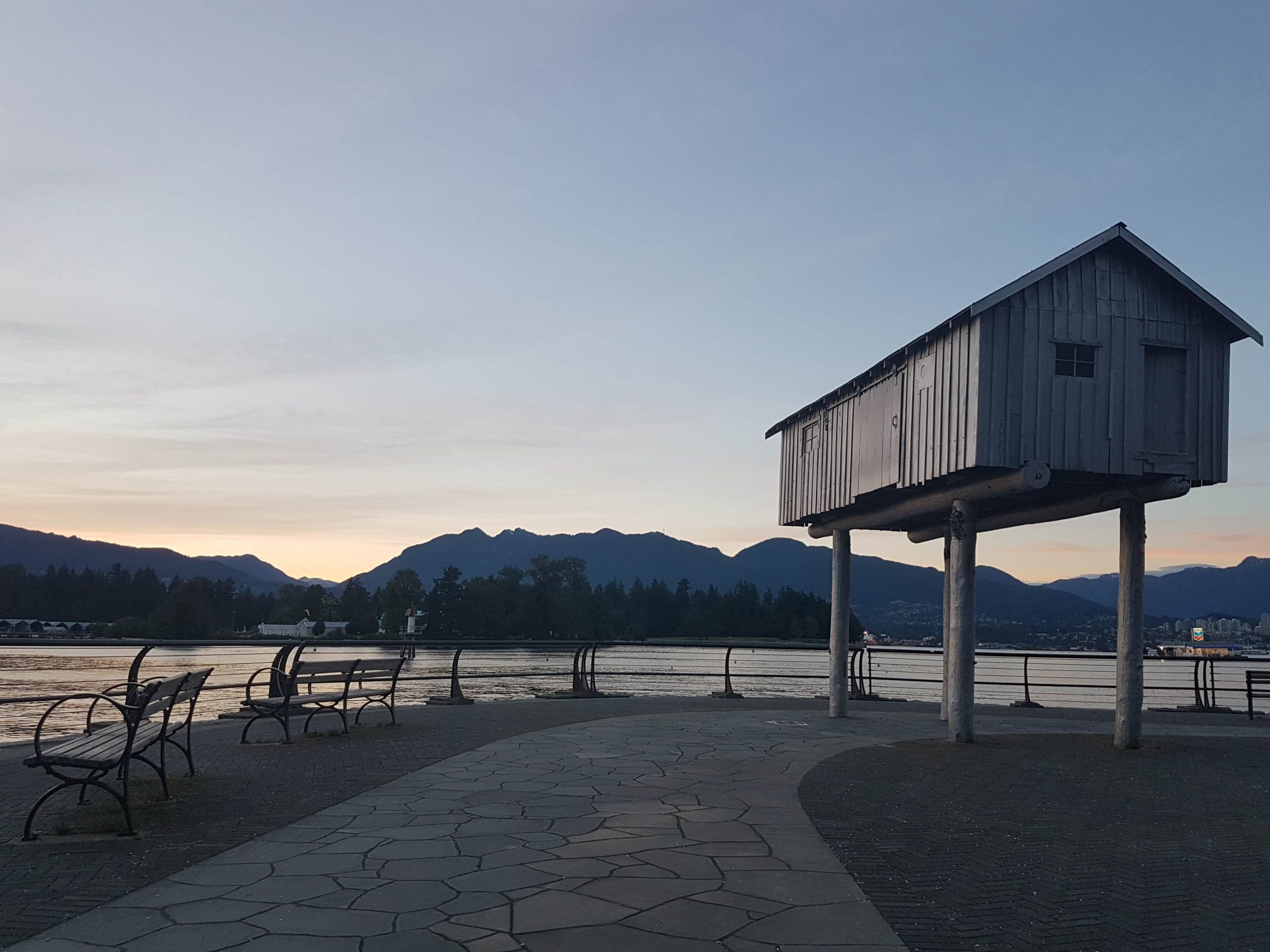
“Lightshed” by Liz Magor, Vancouver
I have visited Vancouver twice and have been captivated by this public sculpture each time. “Lightshed” was commissioned by the local government to sit in a picturesque spot on a public walkway in Coal Harbour, overlooking North Vancouver and the glorious mountains behind. The piece is a model of a freight shed that used to line the seafront when the city was a hub of industry.
The sculpture looks like wood, but is actually cast aluminium, with clever details of barnacles and seaweed to add to the realism. I love the way the silver/grey changes in different lights and I have great memories of sitting on a bench eating take out Chinese food watching the sunset behind this piece.
4. Miniatures by “Chewing Gum Man”, Ben Wilson in London
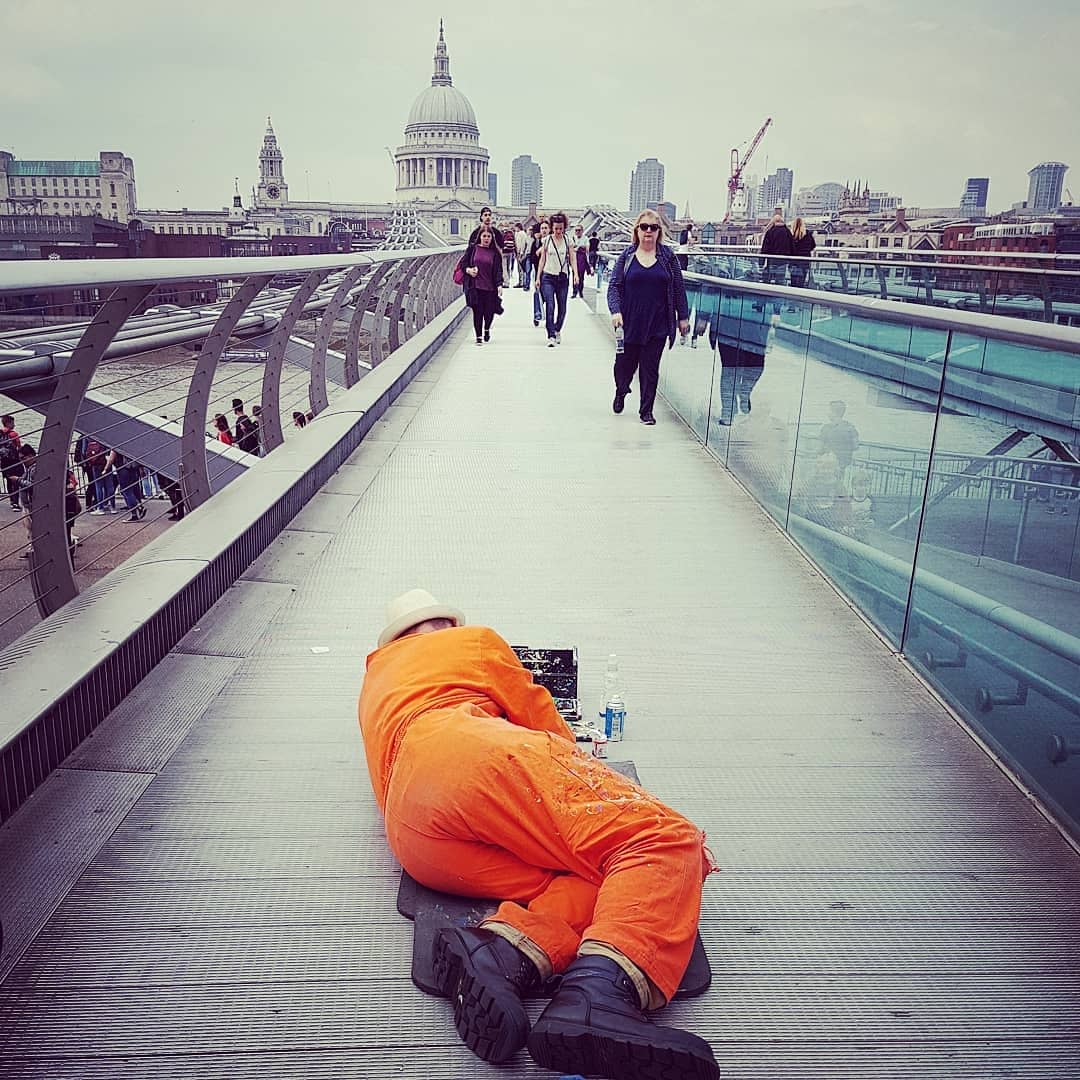
“Chewing Gum Man”, Ben Wilson, in action in London
This certainly wins the prize for most innovative medium! London’s “Chewing Gum Man”, Ben Wilson, paints tiny works of art on discarded gum and doesn’t get in trouble as he’s not directly painting public property- how clever! I stumbled upon him (almost literally!!) in action painting on Millennium Bridge last year.
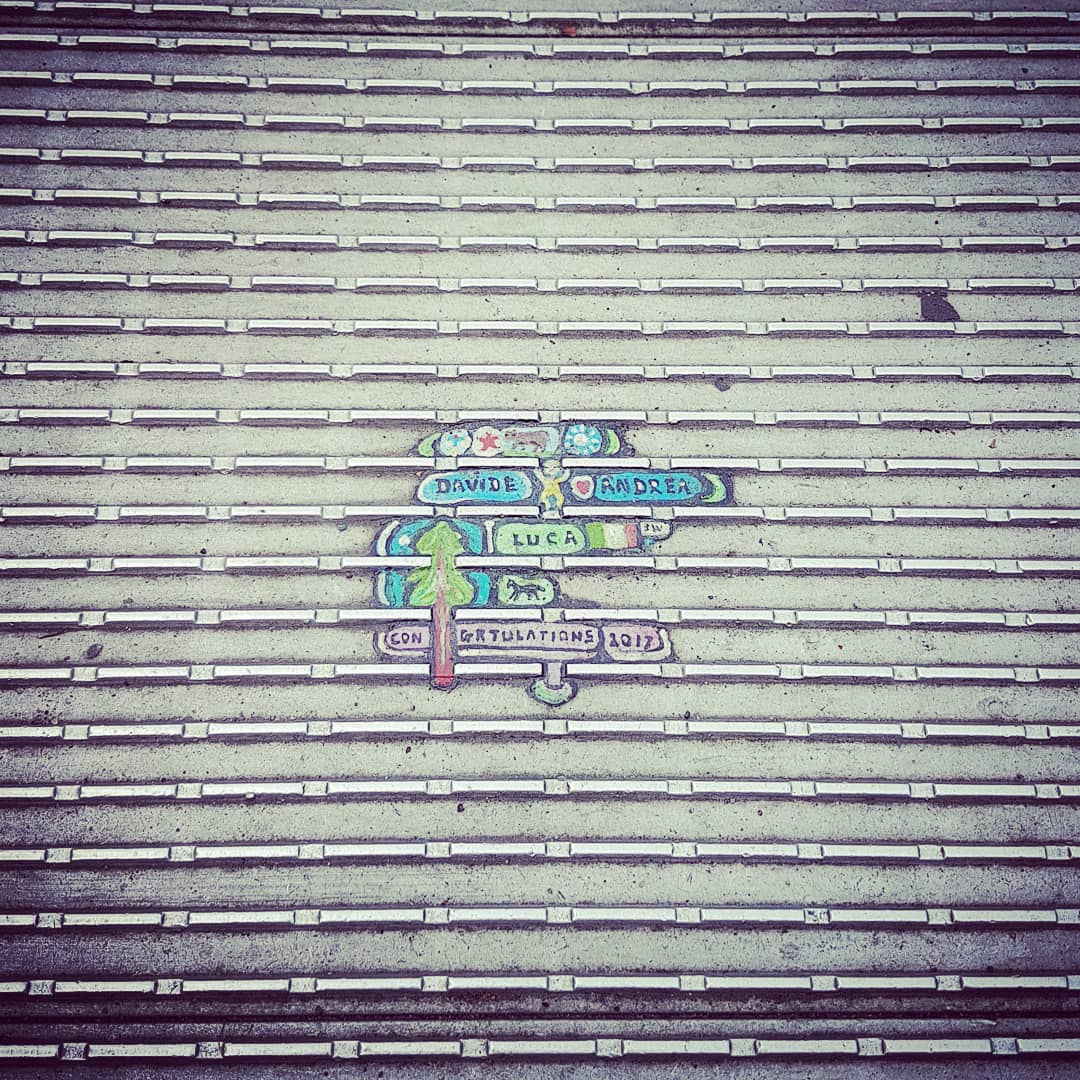
Miniatures by “Chewing Gum Man”, Ben Wilson
5. Noe Valley Community Mural by Mona Caron, San Francisco
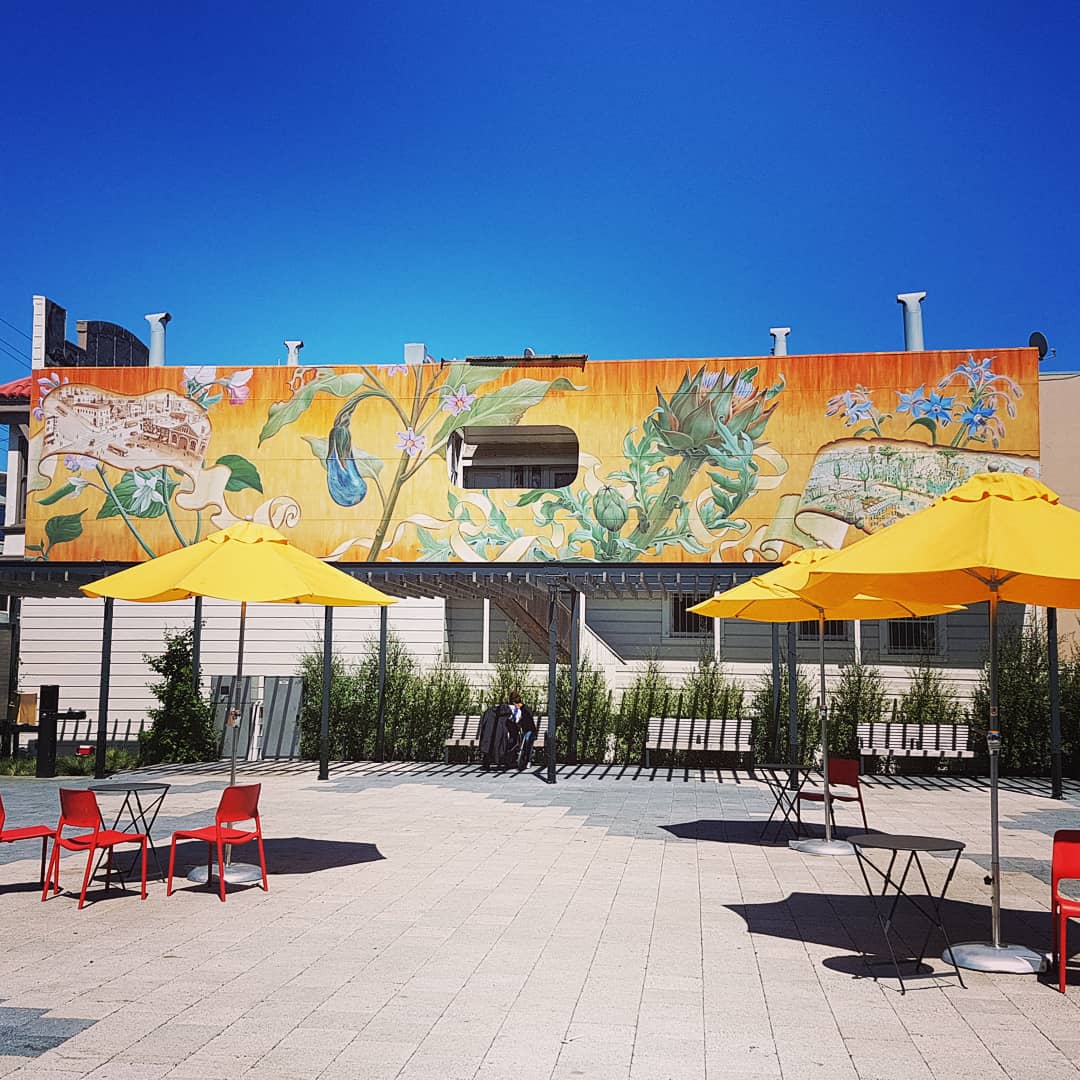
Noe Valley Community Mural by Mona Caron, San Francisco
This is a special piece that I had to include as I was fortunate enough to meet one of the people involved in its creation. I discovered it when walking in the cool Castro area, famous as an epicentre of flamboyant gay culture (of course, my first place to visit!).
I was approached by a fabulous gentleman in tie-dye rainbow jeans while waiting to cross a road and complimented on my colourful outfit, and I quickly returned the compliment. Naturally, we became instant friends, and he offered to take me on a little walk around his neighbourhood.
He was a water scientist out on a weekly stroll to check out the levels of a nearby natural spring (who knew such things existed in the centre of San Francisco!?). We walked and talked for about an hour, and he showed me this community mural by local artist, Mona Caron, that he’d been involved in organising with a community group in 2008.
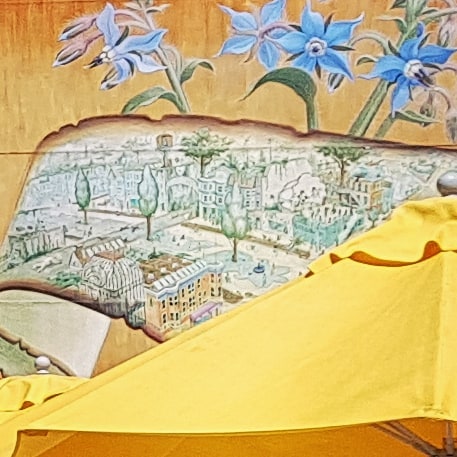
A positive vision of the future from Mona Caron
The objective was to beautify the side of a building in an empty lot, used for markets and public seating on weekends, with something that told a story about the local area and hopes for the future. The detailed sections on either side represent the past and future of the area, with large plants in the centre symbolizing the wealth divide due to gentrification (an issue salient across the city). The future vision was brilliant though- green roads through the city for animals, food sharing banks, and a hot air balloon transport system. I can actually believe this could happen in San Francisco, too!
6. Yarn bombing, New York City
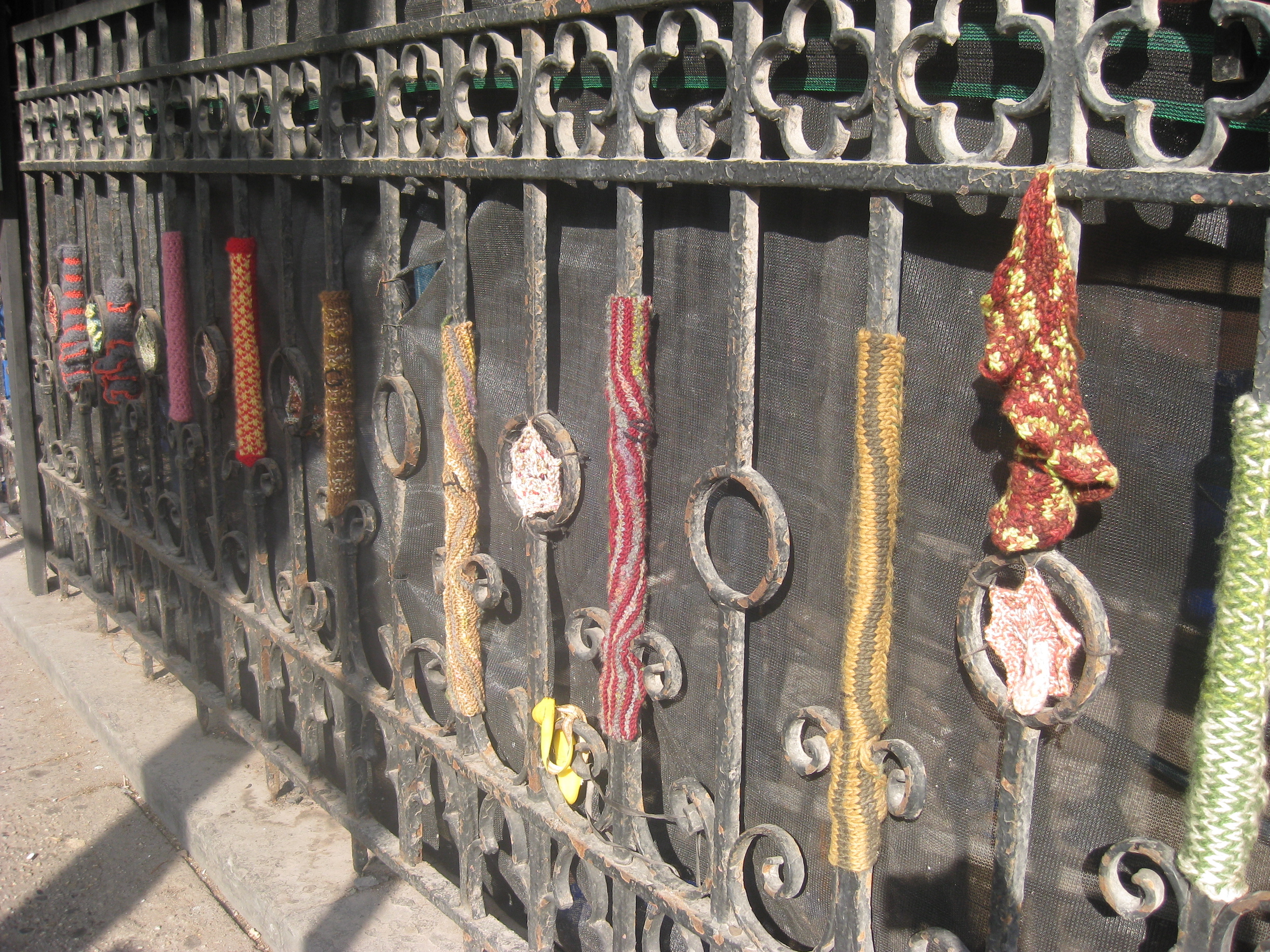
Yarn bombing in New York
I spotted this relatively small-scale example of yarn bombing on some railings while living in New York in 2009. I picked this not because it’s a particularly spectacular example of this art form, but it was the first I’d ever seen of this interesting concept and medium for elicit public art that makes a statement.
Yarn bombing is thought to have originated in 2005 amongst a group called Knitta Please led by founder, Magda Sayeg in Houston, Texas. The mission of the group is to make street art “a little more warm and fuzzy”. It is associated with feminism movements: beautifying cities utilising the traditionally “feminine” art of knitting within the traditionally male-dominated world of graffiti. I also love some of the other names for this: “yarn storming”, “guerrilla knitting”, and “kniffiti”! Sign me up for this!
7. Bees in Manchester
Manchester boomed as a city during the Industrial Revolution and the “worker bee” image symbolises the ordinary folk collectively grafting away to make the city the success it became. The image of the bee is now one of the main symbols of Manchester and can be spotted proudly displayed in many places throughout the city- from mosaic tiles on the floor of the Town Hall, engraved in public street furniture like bins and bollards, and even a series of giant bee sculptures (“Bee in the City”) placed on a trail throughout the city in 2018.
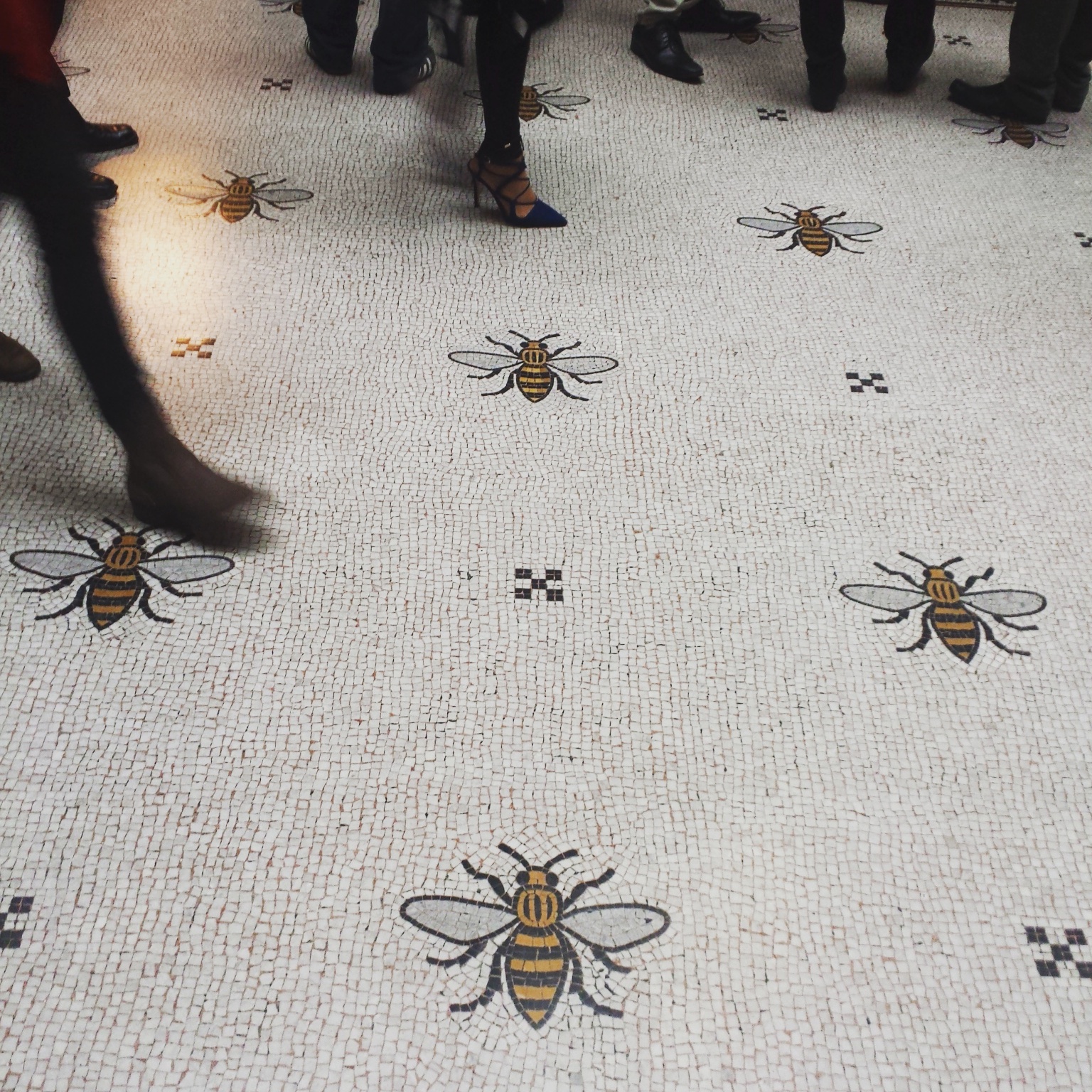
Manchester bees in the Town Hall
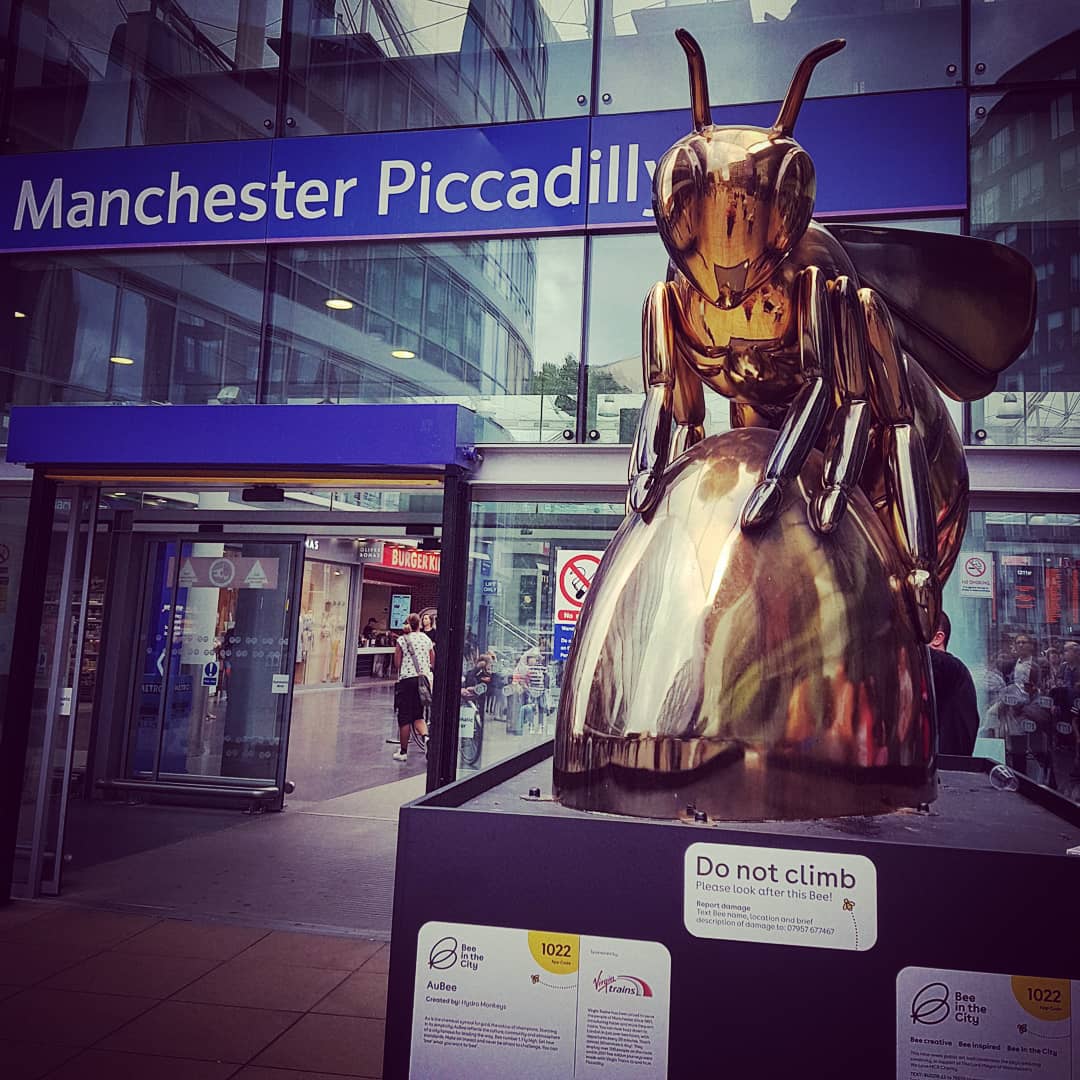
A golden Manchester bee (part of the “Bee in the City” event in 2018)
The bee has gained even more significance following the terrorist attack and killing of 22 people at a Manchester music venue in 2017. The bee became a symbol of togetherness and solidarity at this time. This triggered many people getting Manchester bee tattoos with tattoo artists donating their fees to the victim’s support charities, and many street art tributes and memorials, especially around the artistic Northern Quarter.
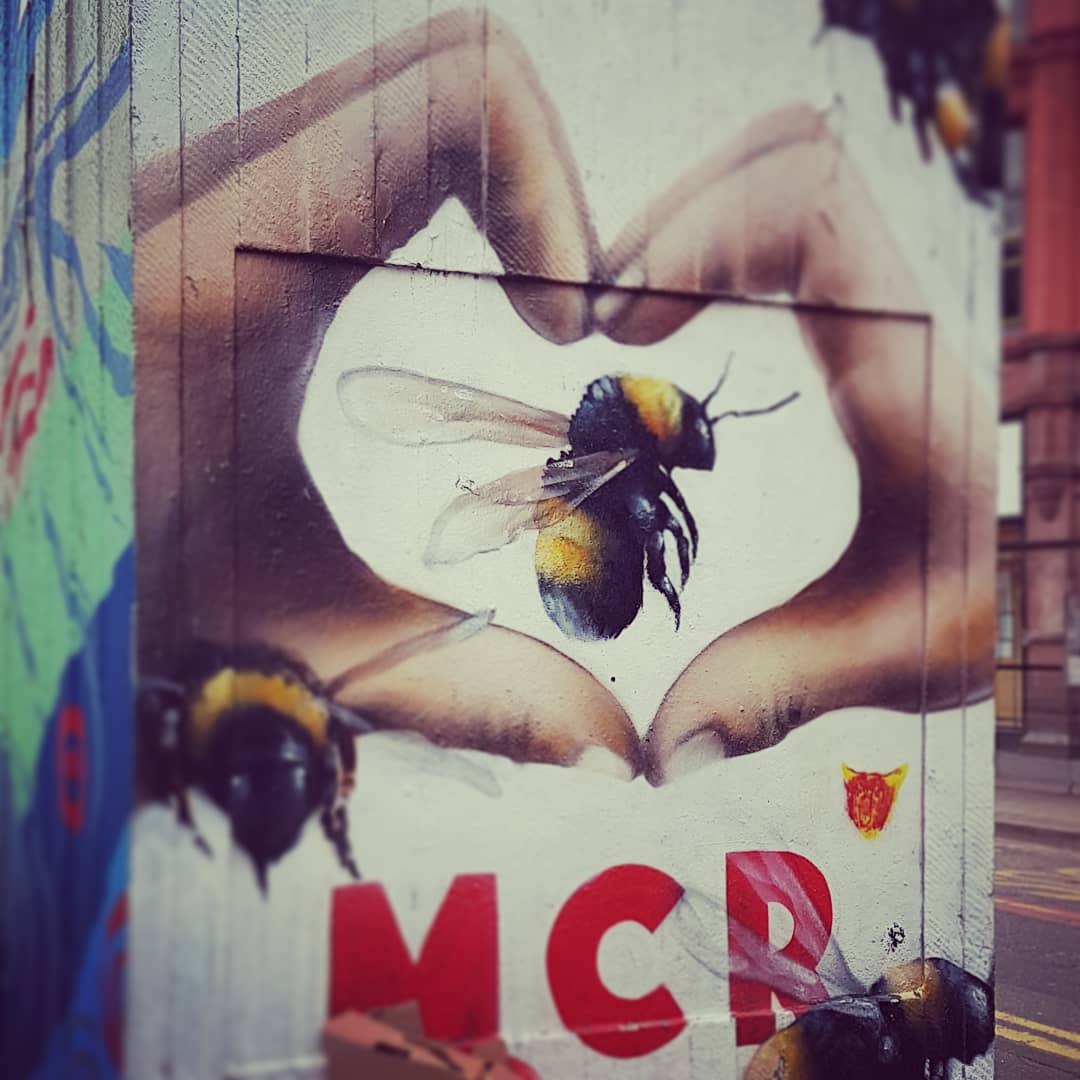
Bee-based street art in Manchester
OK, so this is slightly cheating as it isn’t just one piece, but I think it’s an interesting phenomena that the beloved symbol of a city can be found in some many pieces of public and street art. Also, I’m a Mancunian, so I’m likely to start on you if you have a go at me for this 😉
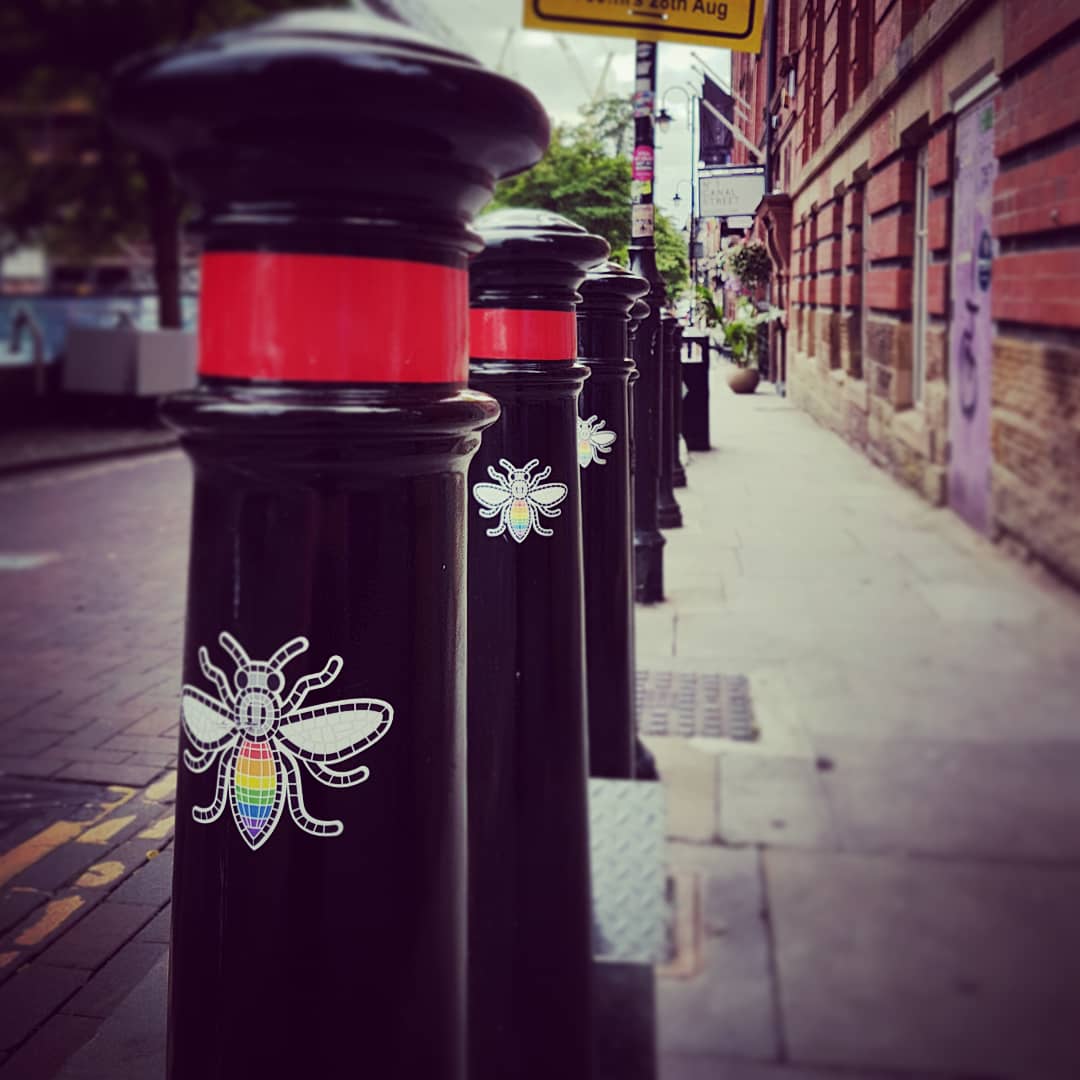
Manchester bee on street furniture (these have been given a fabulous pride makeover due to their location on Canal Street in the gay village)
8. “Todos Juntos Podemos Parar el SIDA” by Keith Haring, Barcelona
Keith Haring was one of the most prominent graffiti artist when this scene was developing in the USA in the 1980s. Sadly, Haring was diagnosed with AIDS in 1988 and died in 1990, aged 31. Within a short time, he used his iconic stick-figure line work to spread an anti-drug message and promote HIV-AIDS and safe sex awareness in public spaces across the world.
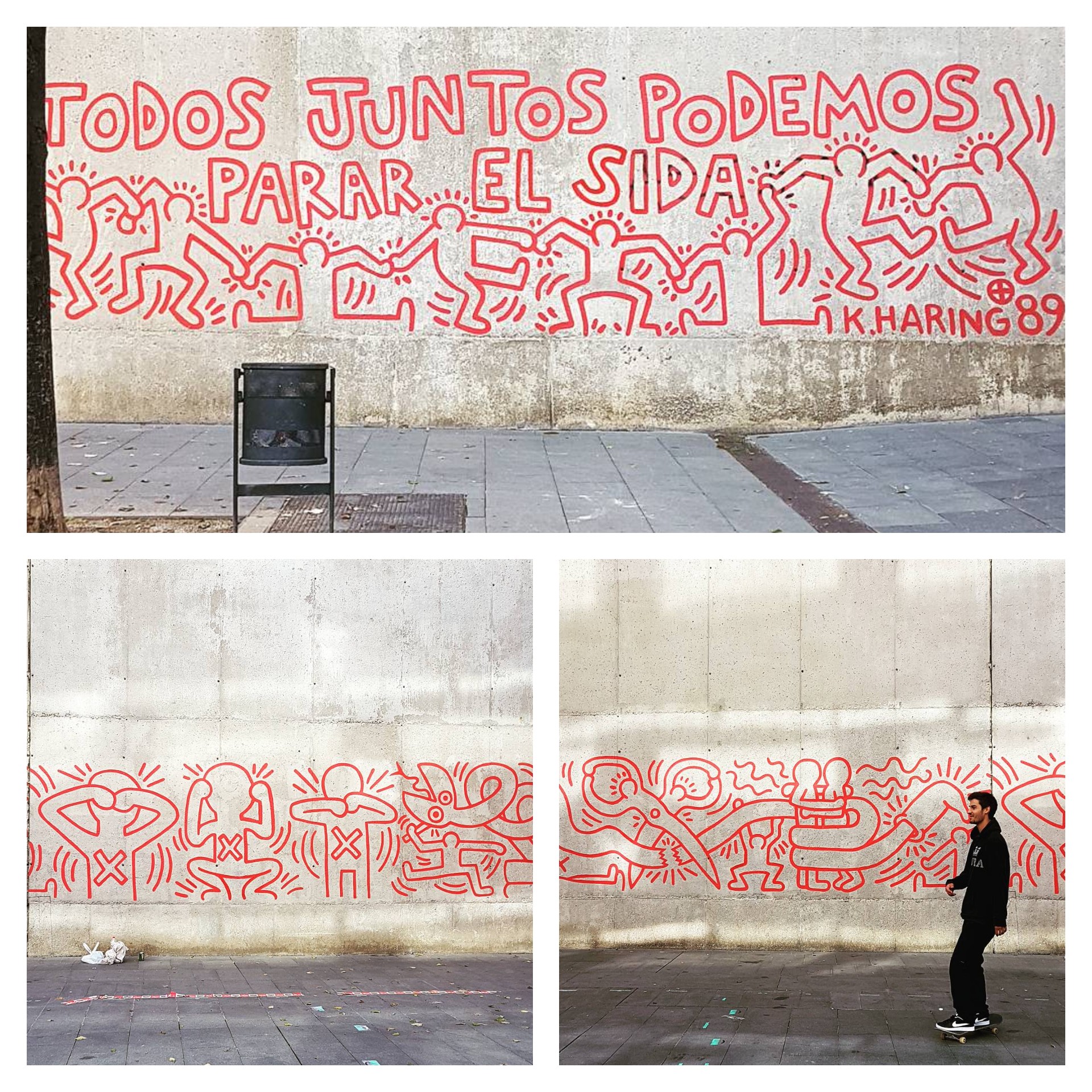
“Todos Juntos Podemos Parar el SIDA” by Keith Haring, Barcelona
This 30m long piece in Barcelona was painted in 1989 on a wall in Plaça de Salvador Seguí in the Raval area, at the time, one of the most dangerous areas of town with needles littering the streets- a perfect location for Haring’s positive message: Todos juntos podemos parar el SIDA (“Together we can stop AIDS”).
Over the years the mural was covered with tags and was about to be removed in 1992 as the area was undergoing renovation. Fortunately, local authorities recognised its cultural significance and brought in a curator at the Museu d’Art Contemporani de Barcelona (MACBA) to see what could be done to save it. The piece was meticulously traced and recreated on this wall outside the museum and continues to be protected and maintained by the authorities.
9. The Rubik’s Cube Mural by Neopaint in Budapest
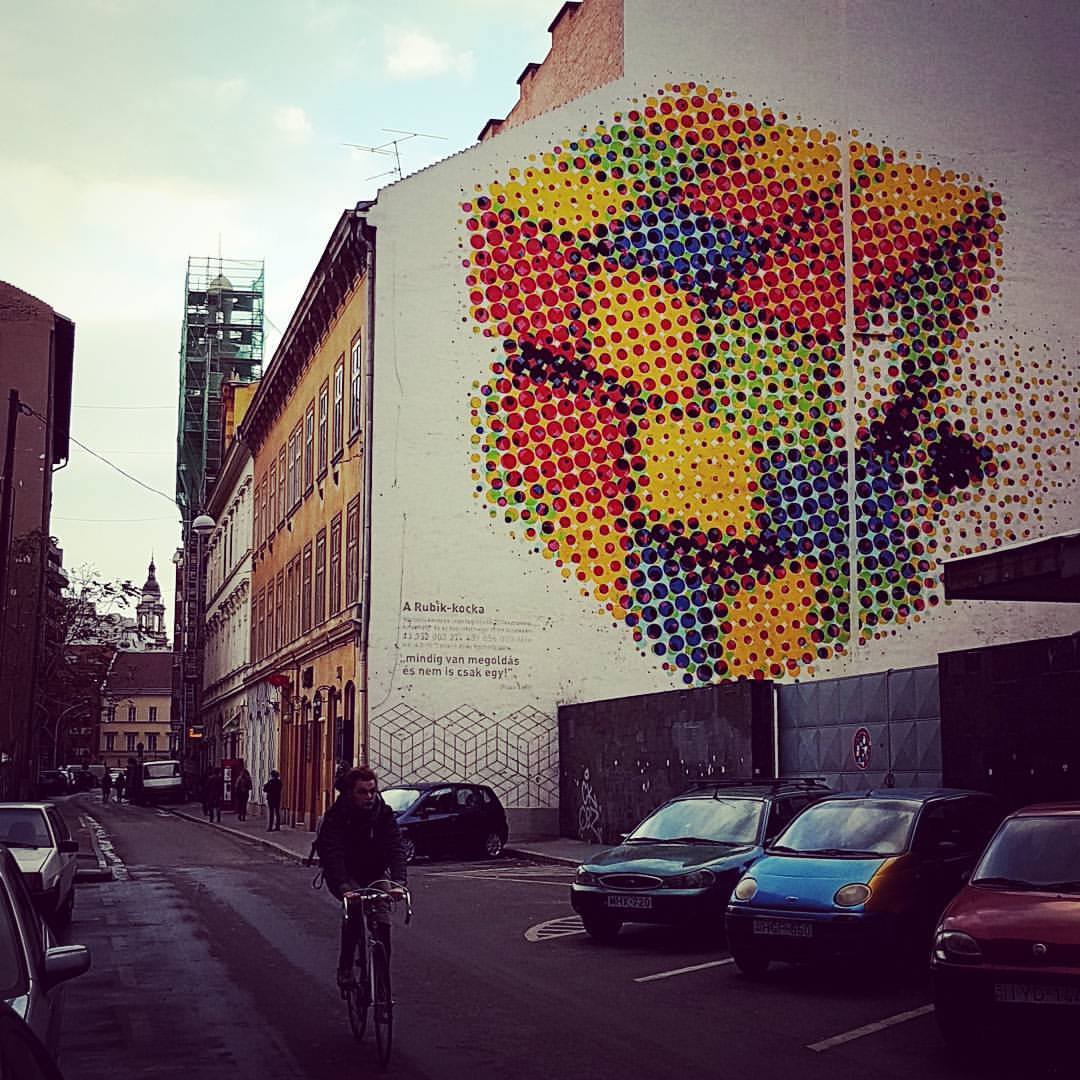
The Rubik’s Cube Mural by Neopaint in Budapest
How cool is this!? This piece honours Hungarian inventor, Enrnő Rubik, who invented the famous cube puzzle in 1974. This piece is as innovative as it is mind-bending: a giant Rubik’s cube painted in pointillism-style circles to create a 3D illusion. Close up, it looks like colourful circles, but it changes as one moves away from it, and comes into focus when at a sweet spot in the distance.
Budapest has many large scale murals, especially in the hipster cool District VII area where there are also famous “ruin bars”. On a street art tour, I learned that most of the street art is official in nature as there’s a 2-4 year prison sentence if caught painting anything without permission. There was also investment from local authorities to beautify the area and support talented local artists.
10. “PrideMatters” by Autone and Neist, London
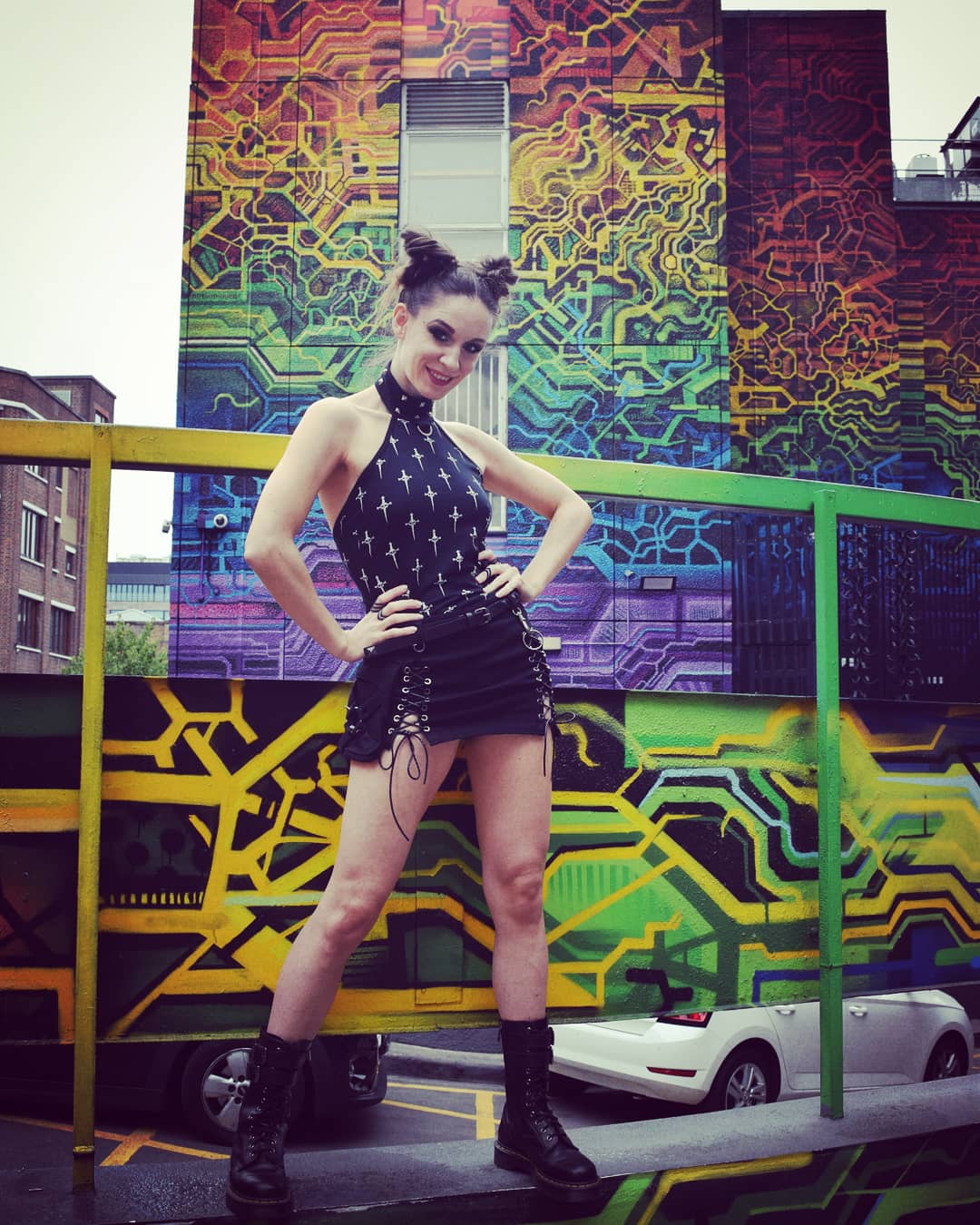
“PrideMatters” by Autone and Neist (and me getting in the way!)
We have to end on one of my favourite local pieces: PrideMatters. Shoreditch in London is very well-known for a vibrant street art scene; including many official and unofficial murals, to walls with changing tags, stencil art, and pieces by some of the most famous street artists in the world (hello, Banksy).
This colourful, pride-inspired piece is part of a large-scale series of murals wrapping an entire building on the theme of “Connectivity”. Other walls feature a crystal ball spelling out “Future”, stylised pigeons and scrolls in reference to earlier forms of communication, and a fabulous robot dancing with a human woman. This piece is comprised of intricate line-work in a rainbow celebration of connectivity no matter your gender or sexual identity- a beautiful way to express this message on a grand scale!
So that’s a whistle-stop tour of some of the street art peieces that have inspired me most on my travels… so far anyway! I look forward to collecting more in future and in doing so, leaning about different artists, styles, and the debates, conflicts, and issues salient to these local spaces.
Thanks for reading 